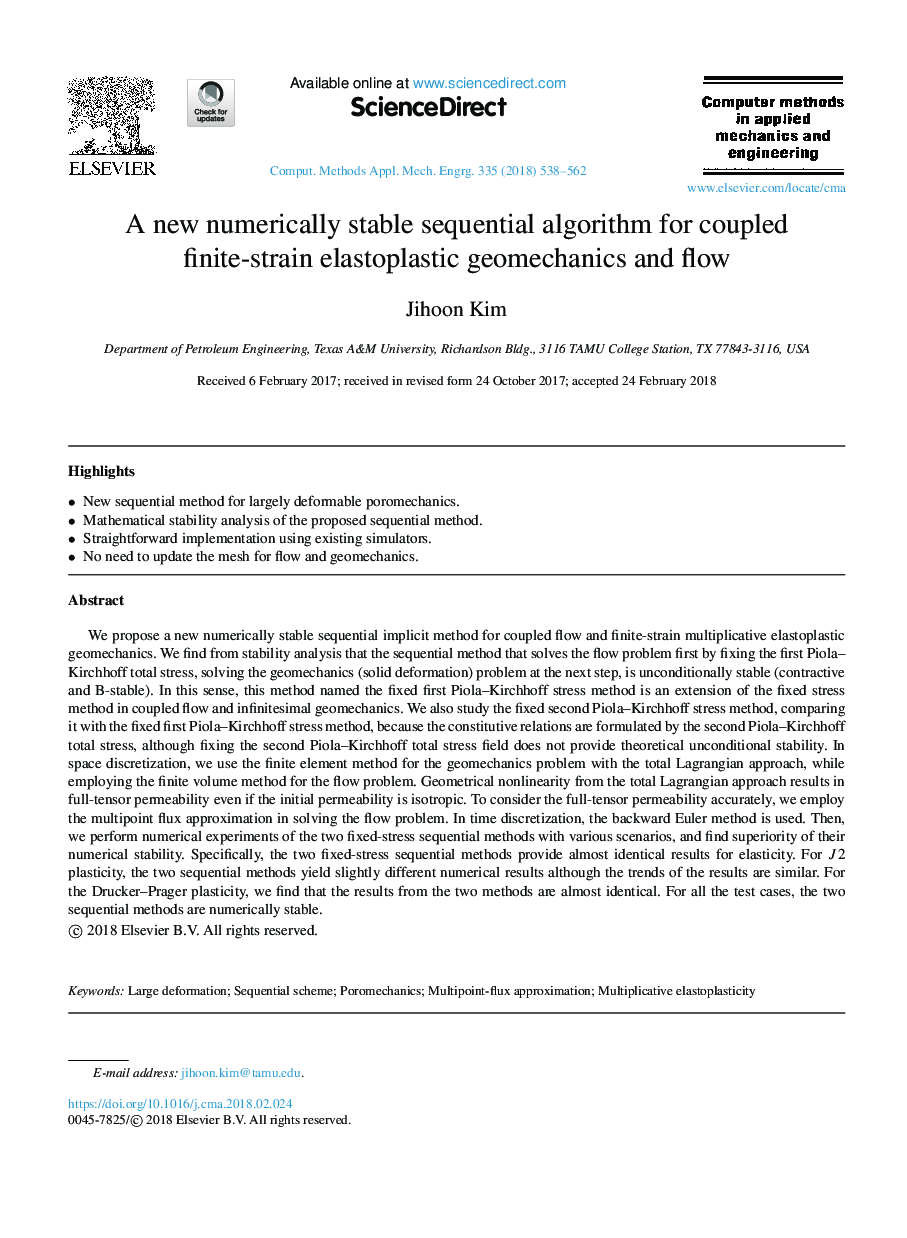| کد مقاله | کد نشریه | سال انتشار | مقاله انگلیسی | نسخه تمام متن |
|---|---|---|---|---|
| 6915518 | 1447400 | 2018 | 25 صفحه PDF | دانلود رایگان |
عنوان انگلیسی مقاله ISI
A new numerically stable sequential algorithm for coupled finite-strain elastoplastic geomechanics and flow
ترجمه فارسی عنوان
یک الگوریتم ترتیبی عددی پایدار برای ژئومکانیک و جابجایی الاستوپلاستیک پلاستیکی محدود شده است
دانلود مقاله + سفارش ترجمه
دانلود مقاله ISI انگلیسی
رایگان برای ایرانیان
کلمات کلیدی
موضوعات مرتبط
مهندسی و علوم پایه
مهندسی کامپیوتر
نرم افزارهای علوم کامپیوتر
چکیده انگلیسی
We propose a new numerically stable sequential implicit method for coupled flow and finite-strain multiplicative elastoplastic geomechanics. We find from stability analysis that the sequential method that solves the flow problem first by fixing the first Piola-Kirchhoff total stress, solving the geomechanics (solid deformation) problem at the next step, is unconditionally stable (contractive and B-stable). In this sense, this method named the fixed first Piola-Kirchhoff stress method is an extension of the fixed stress method in coupled flow and infinitesimal geomechanics. We also study the fixed second Piola-Kirchhoff stress method, comparing it with the fixed first Piola-Kirchhoff stress method, because the constitutive relations are formulated by the second Piola-Kirchhoff total stress, although fixing the second Piola-Kirchhoff total stress field does not provide theoretical unconditional stability. In space discretization, we use the finite element method for the geomechanics problem with the total Lagrangian approach, while employing the finite volume method for the flow problem. Geometrical nonlinearity from the total Lagrangian approach results in full-tensor permeability even if the initial permeability is isotropic. To consider the full-tensor permeability accurately, we employ the multipoint flux approximation in solving the flow problem. In time discretization, the backward Euler method is used. Then, we perform numerical experiments of the two fixed-stress sequential methods with various scenarios, and find superiority of their numerical stability. Specifically, the two fixed-stress sequential methods provide almost identical results for elasticity. For J2 plasticity, the two sequential methods yield slightly different numerical results although the trends of the results are similar. For the Drucker-Prager plasticity, we find that the results from the two methods are almost identical. For all the test cases, the two sequential methods are numerically stable.
ناشر
Database: Elsevier - ScienceDirect (ساینس دایرکت)
Journal: Computer Methods in Applied Mechanics and Engineering - Volume 335, 15 June 2018, Pages 538-562
Journal: Computer Methods in Applied Mechanics and Engineering - Volume 335, 15 June 2018, Pages 538-562
نویسندگان
Jihoon Kim,
